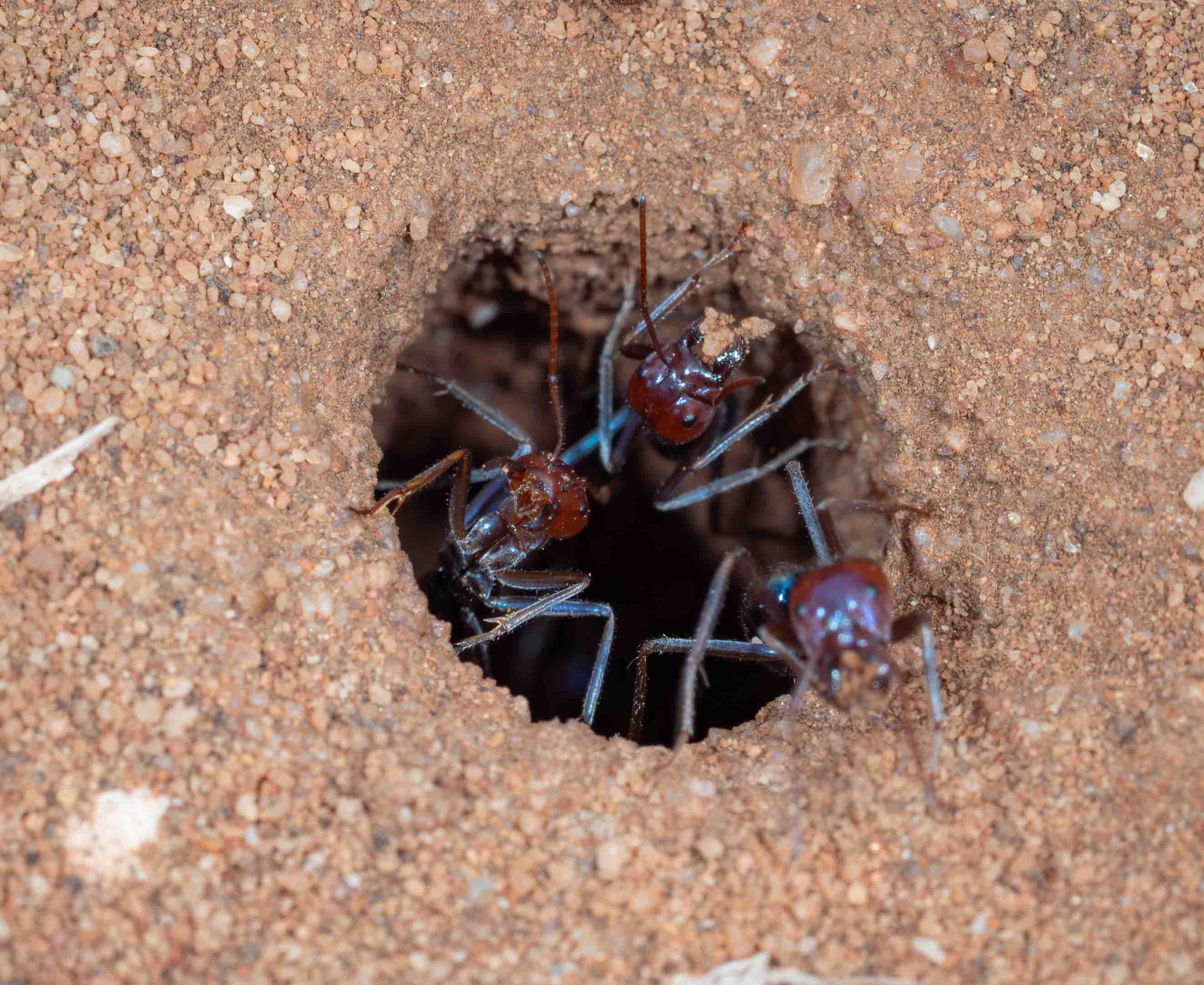
This Australian endemic is common and well known in most parts of Australia. Indeed, it is quite famous for the ability of colonies to rapidly dispose of large animal carcasses. Hence the common name 'meat ant'.
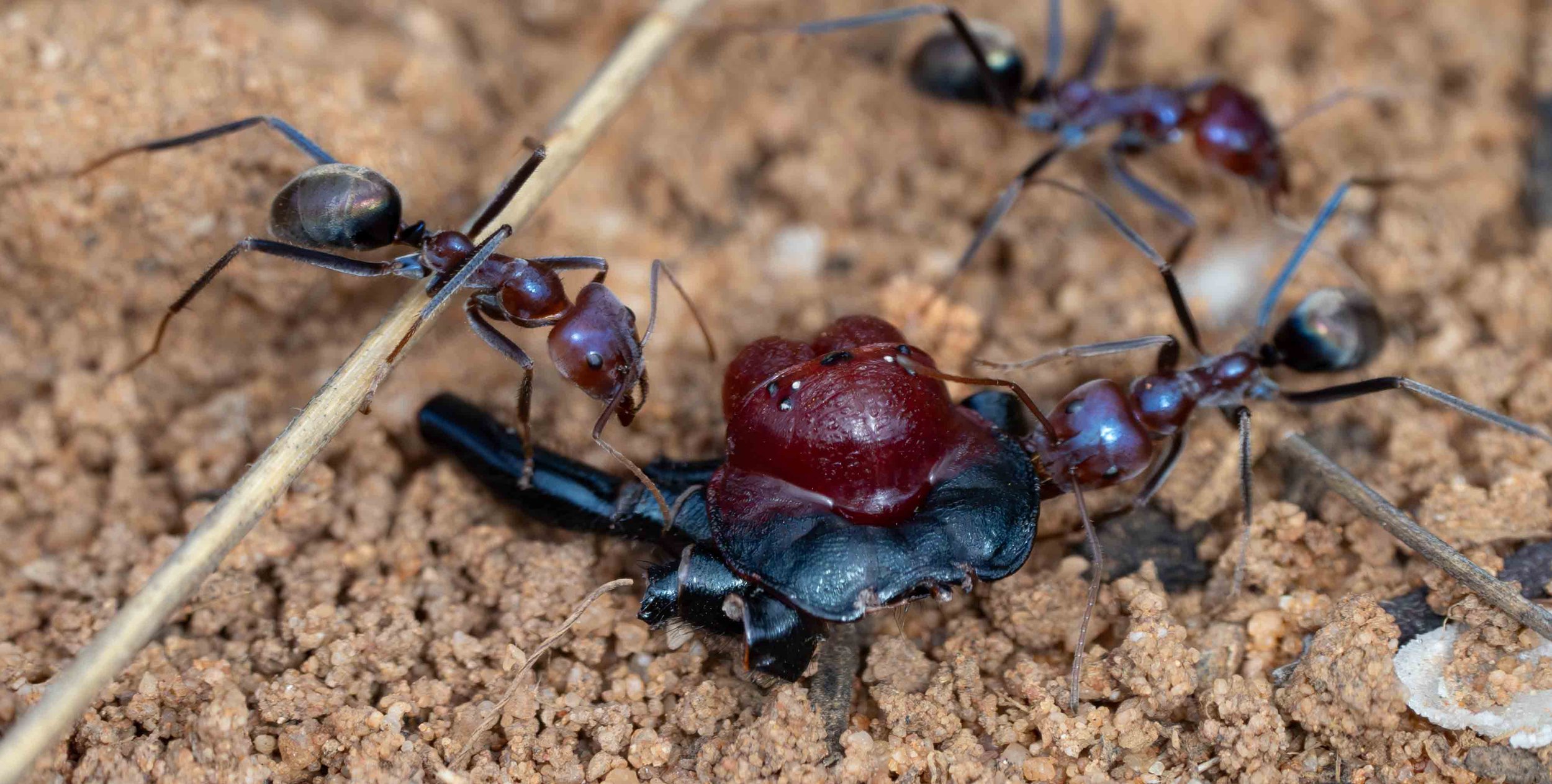
Meat ants, despite their name, are actually omnivores. Adults favour sugary liquids, such as those secreted by caterpillars and bugs. But they are also voracious collectors of protein to feed their young. Other invertebrates – dead or alive – are fair game. Was this mouse spider dead before the ants discovered it? Perhaps. Perhaps not.
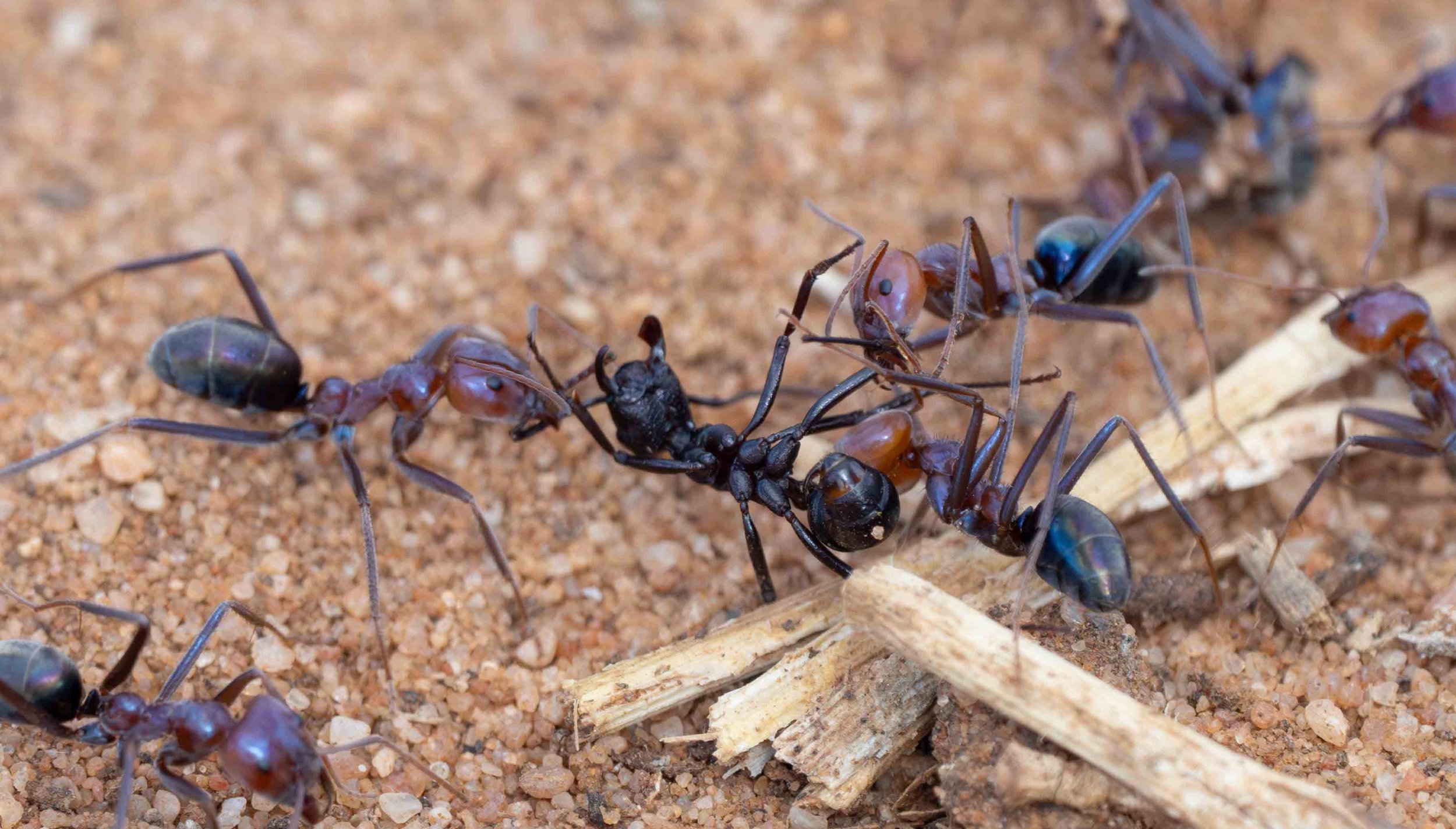
Meat ants are notoriously aggressive toward other, day-active ant species. The Titan Pony Ant here didn't stand a chance.
Although they don't sting, these ants can give a painful bite.
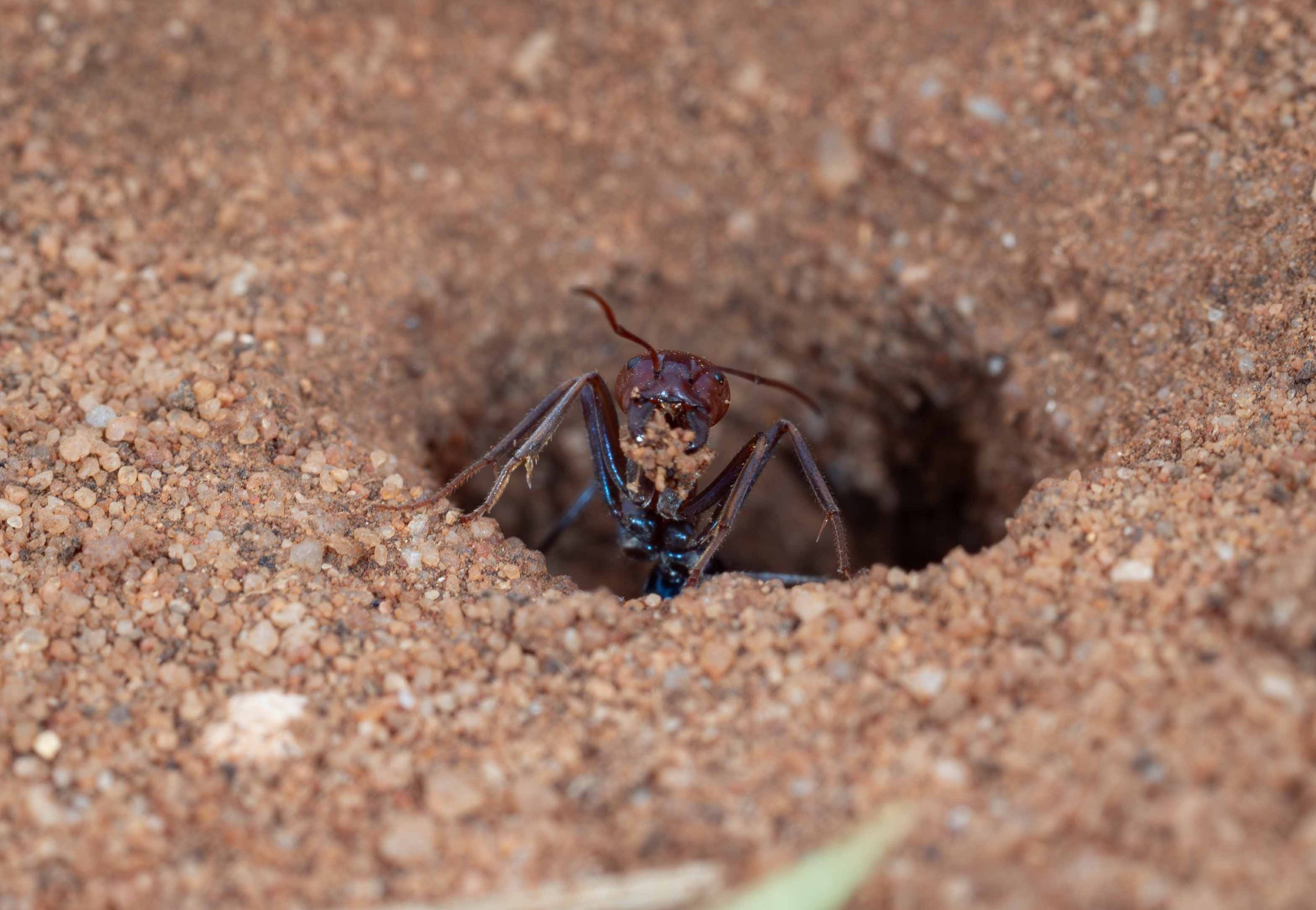
No obvious mounds, just very circular holes. And rather a lot of them!
In many locations, meat ants build huge mounds. But not always. A colony of this species in a similar environment (Morgan, SA) had nest mounds that were low or entirely absent, with just a sparse cover of gravel and twigs (ref. 1).
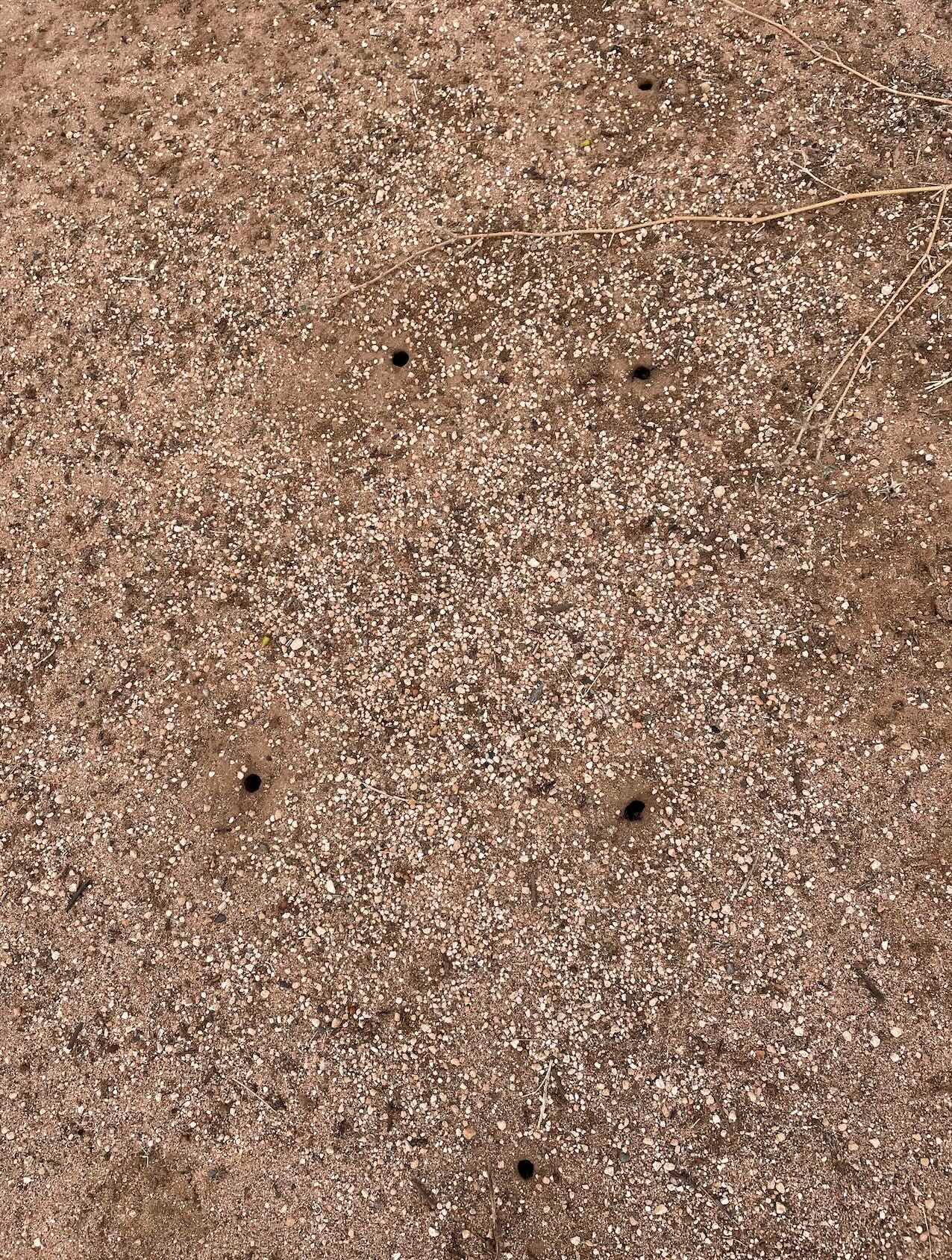
This species favours open, warm, sites with some nearby trees and vegetation. And the mallee country, including the driveway into the house block, is obviously perfect for them.
Meat ants can form huge colonies. A single colony may have numerous nests, each with multiple entrances, and linked by very obvious trails (ref. 1).
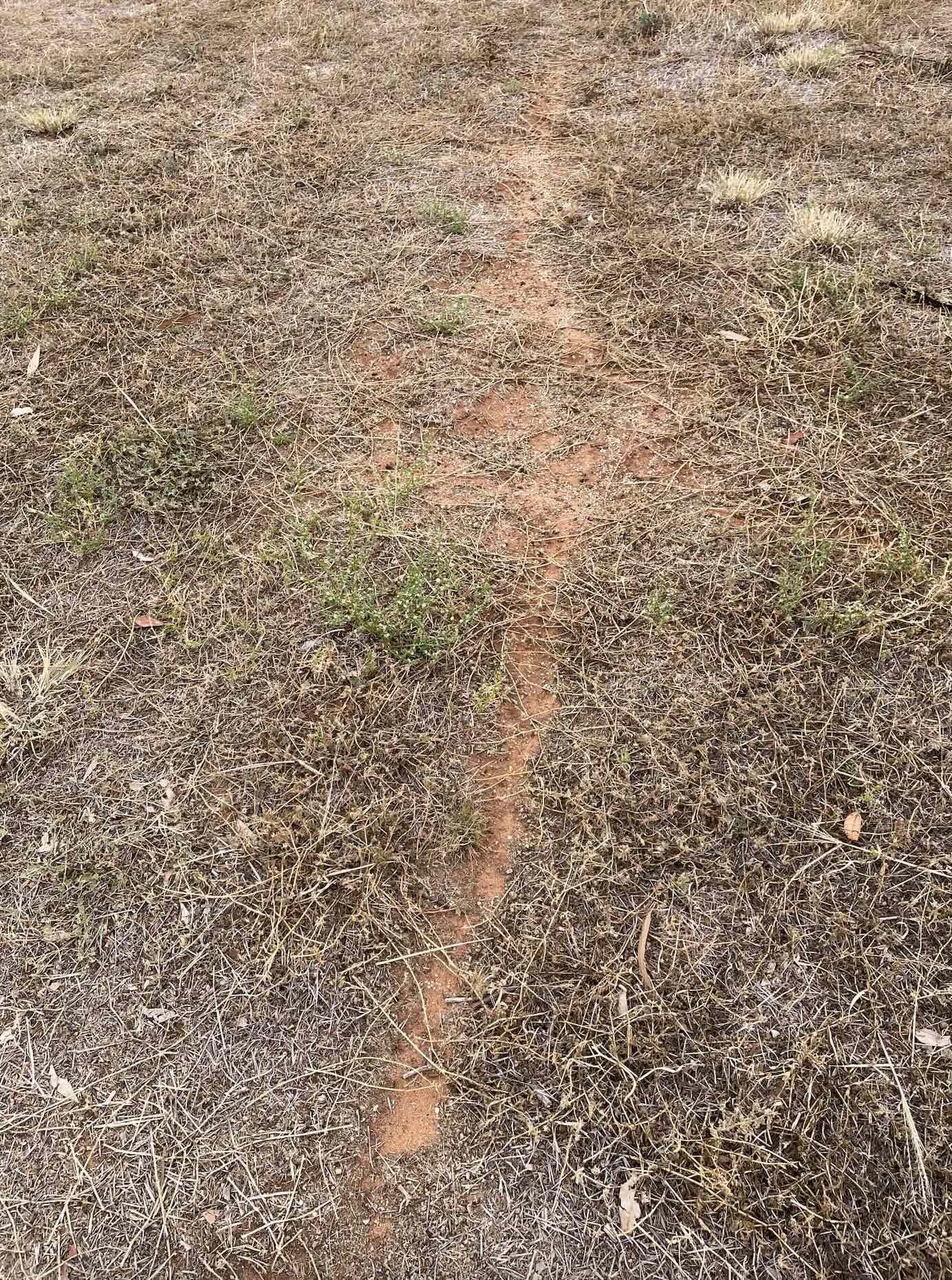
Meat ant trails! These very obvious tracks linked nests and probably also led to favourite foraging areas, such as nearby shrubs and trees.






